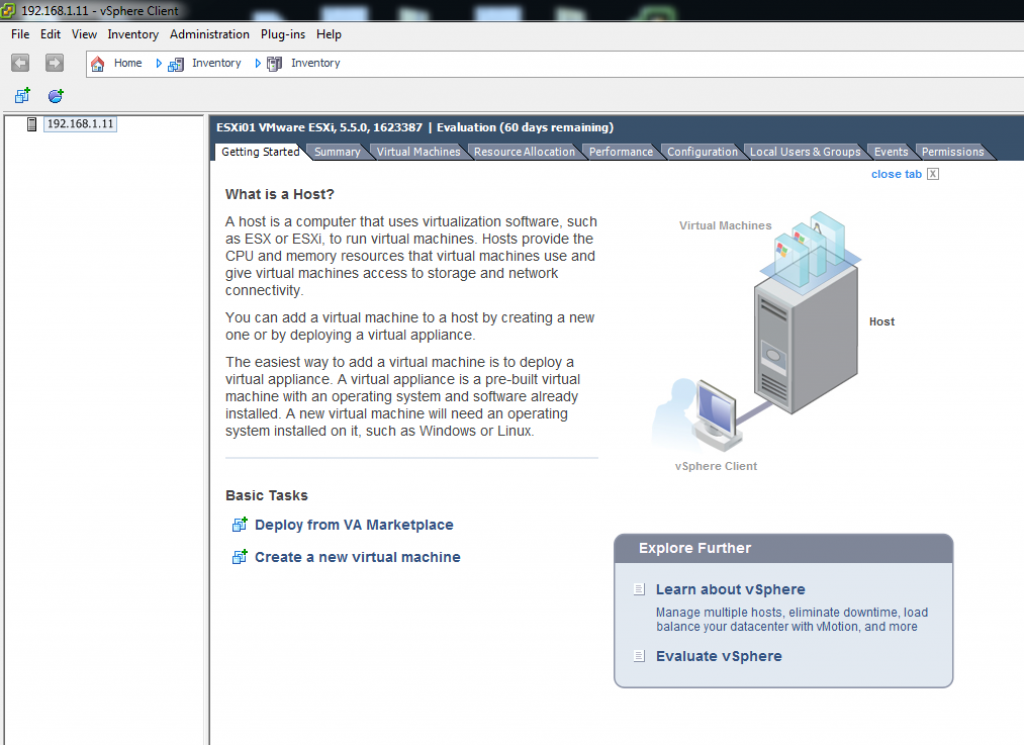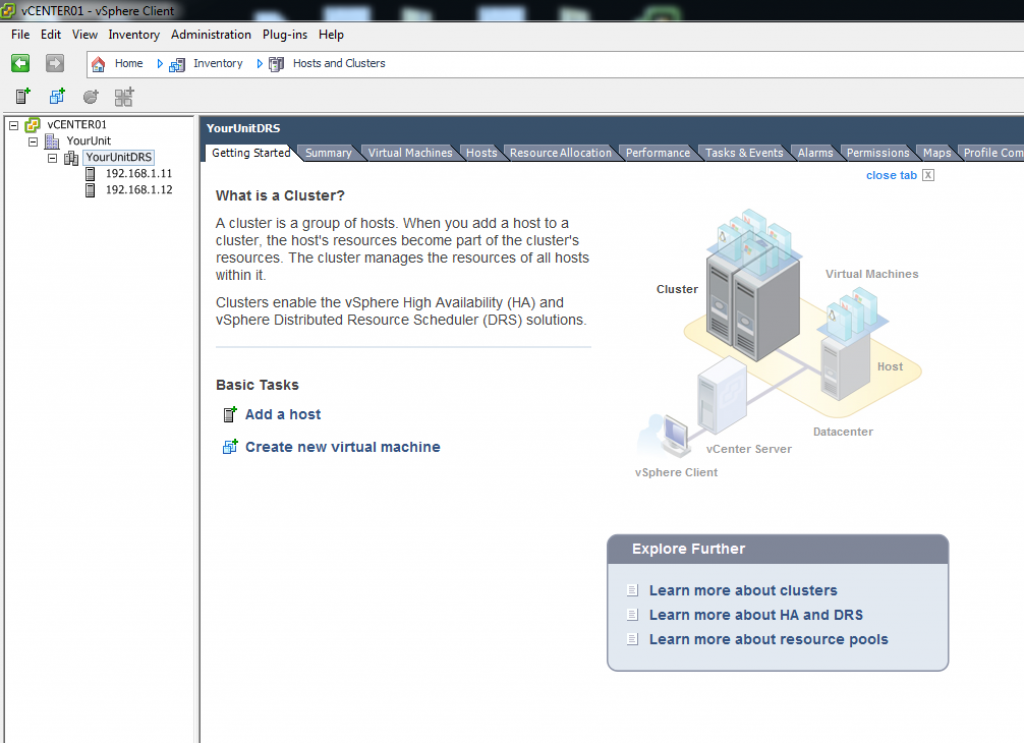What Right Looks Like: Part 1
I was stationed in Europe for a short time and was bombarded by cheesy Army commercials pointing out: “That’s not what right looks like!” You can type “what right looks like” into youtube to see what I am talking about. It gave me the idea for this series of blog posts. I wanted to put something together that would be universally applicable for the 06XX community that would give supervisors at all levels a quick view of something they could look at and immediately know was wrong. This series will be more general in nature, meaning there will not be any detailed dissection of command syntax our outputs. If you have some ideas, please let me know, and I would be happy to include them in the series.
That’s not what right looks like. You can tell this is wrong because your VMware environment includes a single server. Examine the graphic and look towards the top at the icon of the little server. This is your tip-off. It would be highly irregular to employ a single hypervisor, and most likely what is happening in the graphic above is that several hypervisors exist, but they are all being individually managed. This increases the administrative burden of managing multiple VMs (Virtual Machines), and because they are not managed as a single entity do not come with many of the benefits of virtualization. It is possible to have a VMware environment that is properly configured, but individual administrators do not understand how to properly manage these environments. What I have seen them do is logon to the individual hypervisors (like you see above), instead of the vCenter server. Where it becomes tricky is if you are trying to find an individual VM. Ex. you need to find DC02. Where is that? ESX1? 2? 3? If you’ve automated the migration of VMs (DRS and/or DPM), this answer could be different every time. The point is, you’ve paid the premium to get all of the vCenter goodness, use it!
To cover some of the terminology: An ESXi host is a physical server that has VMware ESXi (hypervisor software) installed on it. VMware vCenter is software designed to manage the interaction of ESXi hosts. The “server build” you are used to hearing about is the provisioning of VMs on one, or multiple, ESXi hosts. An example of this would be installing a VM of Windows Server 2012 on ESXi host 1 serving as your first domain controller (DC01). Concepts like vMotion (live VM migration) or storage vMotion (live storage migration) are only possible when you have vCenter configured and your ESXi hosts managed by vCenter.
That’s what right looks like! The administrator has logged into vCenter, instead of logging into an ESXi host individually. When you click on the “Virtual Machines” tab, you can quickly find which VMs are running from a single management screen.

